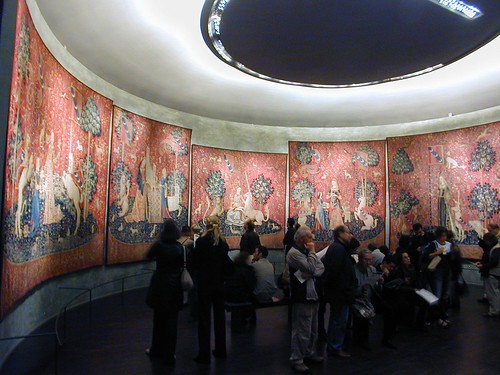I had quite good education when I grew up in China and we studied both Chinese and world histories but these two strands of history lines remain disjointed and when I am confronted with historical events or figures from these two spheres, they often have struck me different senses of remoteness.
For example, the nine crusades took place from 1096-1272, during those time, China was called Song Dynasty (960-1279), which was a time the Chinese saw the prosperous trades, commerce and arts, yet constantly losing lands to the northern nomadic nations. Song was conquered by the Mongolian. To me, Song Dynasty didn't not invoke the romantic knight culture permeated in the ballads and epic poems such as La Chanson de Roland, or Orlando Furioso. Rather, it was a period of familiar and tangible, a period of craftsmanship and petty bourgeoisie, not dissimilar to the Renaissance period in Europe. We understand the joy and pain of those Chinese folks, but have hard time to understand those strange etiquette of the knightly courts and the reining ladies.

Musée National du Moyen Âge: Lady and the Unicorn
The Italian Early Renaissance occurred during 1400-90 and the High Renaissance took place in the period of 1490-1530, when China was called Ming (Dynasty) (1368-1644), which was second to the last. Since I have learned so many dynasties and their stories preceding to it, Ming Dynasty was almost a modern time to me. Because my knowledge of western history was confined to the ancient Greece, Roman, and a bit of Medieval time, the Renaissance time was assigned to a more ancient time frame in my mind.
The Baroque era in the west took place in the period of 1600-1700. Thinking of Bach, Mozart. They were relatively ancient figures. Yet, again, in China, the last Dynasty Qing came into existence from 1644. Comparing to all those long and varied stories of the proceeding dynasty, Qing Dynasty (1644-1911) was almost intimate to many Chinese.
This sense of confusion does not dissipate with my increasing familiarity with western history. The more details I learn, the more confused I got. This confusing sense actually is quite enriching.

City wall dated from Ming Dynasty, Xi'an, China





No comments:
Post a Comment